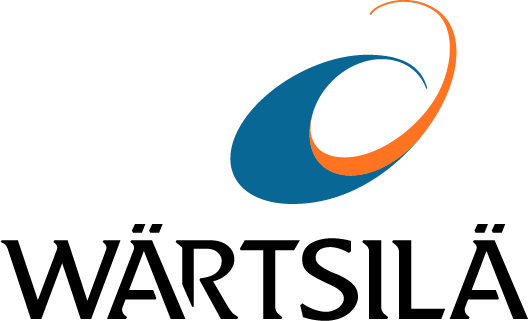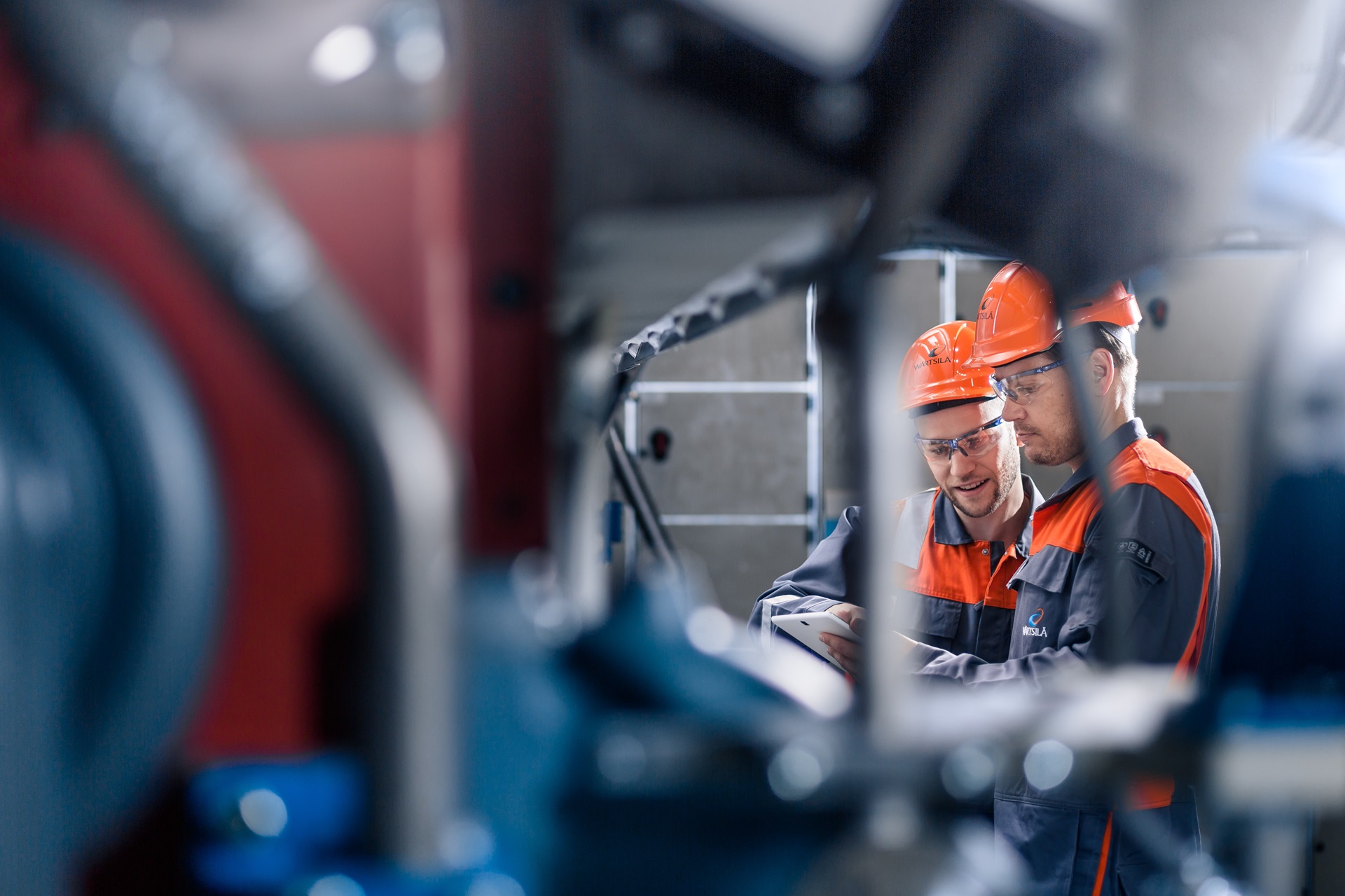

Wärtsilä published its Interim Report for January–March 2025 on Friday 25 April 2025 at 8:30 am EEST. Here are the key messages and Q&A on the report.
General/market environment
Wärtsilä had a solid first quarter of 2025, achieving an improved operating result and significant growth in net sales. However, towards the end of the quarter, uncertainty in the global economic outlook increased. Higher and broader trade barriers, along with policy uncertainty, are expected to limit global economic growth.
In the energy market, the continued growth in electricity demand is anticipated to drive demand for new power generation. This growth will primarily be met by renewables, with wind and solar expected to achieve record-high capacity additions in 2025. The increasing share of intermittent renewables in power systems worldwide also creates demand for balancing technologies, where Wärtsilä has a strong offering. However, the current trade policy uncertainty presents challenges to global energy-technology supply chains.
In the marine market, the growth rate for ship capacity demand has moderated from the 15-year high seen in 2024. While the market remains positive overall, uncertainty in global trade has led to mixed sentiments across various vessel segments. Investments in new ships during the quarter were below the levels seen in the same period last year. Wärtsilä's key customer segments – cruise, ferry, and offshore – have performed better than the general market. There was also a healthy pickup in alternative fuels, which accounted for 65% of the capacity of contracted vessels in the first quarter.
Order intake, net sales, operating result and cash flow
Wärtsilä’s order book was at an all-time high at the end of the first quarter of 2025 even though order intake in the first quarter decreased organically by 2%. Equipment order intake decreased, primarily due to lower orders in Energy Storage and Optimisation, while equipment order intake in Engine Power Plants increased by 35%. Service order intake increased, supported by higher activity in Marine and Energy. Net sales increased organically by 18%, mainly supported by growing equipment sales in Marine and Energy.
The comparable operating result increased by 29% to EUR 171 million, representing 11.0 % of net sales. The result was supported by increases in Marine, Energy and Portfolio Business. Cash flow from operating activities was solid at EUR 190 million in the first quarter. As stated earlier, the current negative working capital level is very favourable for our business, and we expect it to normalise going forward. Our active efforts on all aspects of working capital will continue in order to maintain a working capital level clearly below the long-term historical average.
Outlook
Marine
Wärtsilä expects the demand environment for the next 12 months (Q2/2025-Q1/2026) to be better than in the comparison period.
Energy
Wärtsilä expects the demand environment for the next 12 months (Q2/2025-Q1/2026) to be better than in the comparison period.
However, Wärtsilä underlines that the current high external uncertainties make forward-looking statements challenging. Due to high geopolitical uncertainty, the changing landscape of global trade, and the lack of clarity related to tariffs, there are risks of postponements in investment decisions and of global economic activity slowing down.
Q&A
You expect the demand environment to be “better” for the next 12 months (Q2/2025–Q1/2026) for Marine. What are the main drivers for this?
- We see that Wärtsilä’s core segments continue to perform well. A potential slowdown in container liners between China and the USA is not expected to have significant impact on Wärtsilä.
- The outcome of the International Maritime Organisation’s (IMO) MEPC83 meeting and the agreed proposal for a global carbon fee in the marine market supports the continued decarbonisation journey.
- Solutions that drive fuel efficiency continue to see good demand.
- In service business, we see good opportunities with our strategy of moving up the service value ladder and supporting our customers in improving their operational efficiency.
- However, we underline that the current high external uncertainties make forward-looking statements challenging. Due to high geopolitical uncertainty, the changing landscape of global trade, and the lack of clarity related to tariffs, there are risks of postponements in investment decisions and of global economic activity slowing down.
You expect the demand environment to be “better” for the next 12 months (Q2/2025–Q1/2026) for Energy. What are the main drivers for this?
- The growing demand for electricity driven by the ongoing electrification in many industries is expected to continue.
- Renewable energy (wind and solar) is anticipated to be the most affordable way to generate electricity going forward. Growing share of renewable energy requires balancing power to cover for intermittency.
- Data centres present a promising baseload opportunity due to delayed grid connections.
- There is a good pipeline in both energy businesses.
- In Engine Power Plants, most customer segments in the US are continuing investments. In Energy Storage, the tariffs between the US and China are weakening business conditions in the US, but there is good potential in other key geographies, such as Australia.
- The utilisation of our Energy installed base is stable, providing good opportunities for services going forward.
- However, we underline that the current high external uncertainties make forward-looking statements challenging. Due to high geopolitical uncertainty, the changing landscape of global trade, and the lack of clarity related to tariffs, there are risks of postponements in investment decisions and of global economic activity slowing down.
How will the tariffs (announced and planned) and related uncertainty impact your business?
- The tariffs announced are not expected to have a significant direct impact on our Marine business as shipyards, which are our customers in newbuild contracts, are primarily located outside the US. The repair yards are primarily located outside the US as well. However, the high geopolitical uncertainty, the changing landscape of global trade, and the lack of clarity related to tariffs may increase the risk of lower trade and shipping volumes.
- The revised measures following the US Trade Representative's Section 301 investigation into Chinese practices will have more moderate impact on shipping and shipbuilding than previously expected as they significantly reduce the scope of impacted vessels and port calls compared to the original proposals.
- The US is an important market for the Engine Power Plant business. The direct impact of tariffs is passed on the customers. Manufacturers with production and sourcing in the US will benefit from import tariffs to a certain degree, but most energy competitors have production and sourcing outside the US. Some potential impacts on Wärtsilä are mitigated by our EPC (Engineering, procurement and construction) partners’ local content and workforce.
- In Energy Storage and Optimisation, we mostly see indirect impact through slow decision making in the US impacting order intake.
- In the vast majority of cases both in Marine and Energy, the customer is responsible for paying the tariffs.
- We are monitoring the tariff situation closely, assessing the potential impacts on our exposure to tariffs and implementing mitigation actions.
How do you see that the outcome of International Maritime Organisation’s MEPC83 meeting will impact your business?
- The International Maritime Organisation’s (IMO) MEPC83 meeting agreed on the proposal for Net Zero Framework to support and drive the global shipping towards meeting the IMO´s target of net-zero greenhouse gas emissions by or around 2050.
- If approved, this will be the first global carbon fee in maritime that will set the path globally for maritime decarbonisation and is fully aligned with our strategy.
- The impact of the decision on our business is still somewhat uncertain as many guidelines related to the agreement are still to be developed and agreed upon. The formal adoption of the mid-term measures is expected in October 2025.
What does the weakening of USD mean to your business?
- All Wärtsilä's equipment sales contracts as well as purchase contracts where the exchange rate is fixed are hedged for foreign exchange risk. Hence the impact of weakening USD on profit and loss is expected to be limited.
- Wärtsilä’s competitiveness is indirectly impacted by the home currencies of its main competitors such as those from the US.
- In 2024, 54% of Wärtsilä’s net sales was EUR denominated and 32% was USD denominated. Of our operating costs in 2024, 53% was EUR denominated and 23% was USD denominated.
Your order intake in Energy Storage and Optimisation was very low. Considering the current uncertainties, should we expect this kind of levels going forward?
- It is good to remember that the Energy Storage and Optimisation business is lumpy by nature and that the average order sizes have increased, also increasing the lumpiness. Order intake in Energy Storage and Optimisation was low in Q3/2024, high in Q4/2024, and now low again in Q1/2025.
- In Energy Storage and Optimisation, we mostly see indirect impact through slow decision making in the US impacting order intake in Q1.
- Contract negotiations with customers outside the US continue as before.
- On Energy business level, we estimate the demand environment for the next 12 months to be better than in last 12 months. However, we underline that the current high external uncertainties make forward-looking statements challenging. Due to high geopolitical uncertainty, the changing landscape of global trade, and the lack of clarity related to tariffs, there are risks of postponements in investment decisions and of global economic activity slowing down.
Your comparable operating margin improved even though equipment net sales growth was much stronger than service growth, why is this?
- The comparable operating margin improved to 11.0% (10.0) despite a less favourable mix between equipment and service. This was driven by improved newbuild margins and higher service volumes in Marine and Engine Power Plants and good development in Portfolio Business.
- Investments related to selective entry into new markets burdened profitability in Energy Storage and Optimisation.
Your operating cash flow was good and working capital continued to be negative. Will this trend continue in 2025 and what could change it?
- Cash flow from operating activities was EUR 190 million, compared to EUR 258 a year ago. Cash flow was supported by the improved result, as well as by working capital remaining at a low level (-770 MEUR), fairly similar to the level at the end of 2024.
- It is good to note that the current negative working capital level is very favourable for Wärtsilä. Our mid to long term historical working capital to net sales ratio has always been positive until 2022, while we closed 2023 and 2024 on a negative level.
- Actions on all elements of working capital (payment terms, receivables, payables, inventories, etc.) have supported us to further reduce the working capital level in 2024. These actions will continue in 2025.
- Even though many of these working capital actions are sustainable improvements, such as stock optimisation, lower overdue receivable balances, and faster throughput times, we believe it will normalise to a less negative or potentially small positive working capital / sales ratio in the mid to long term.